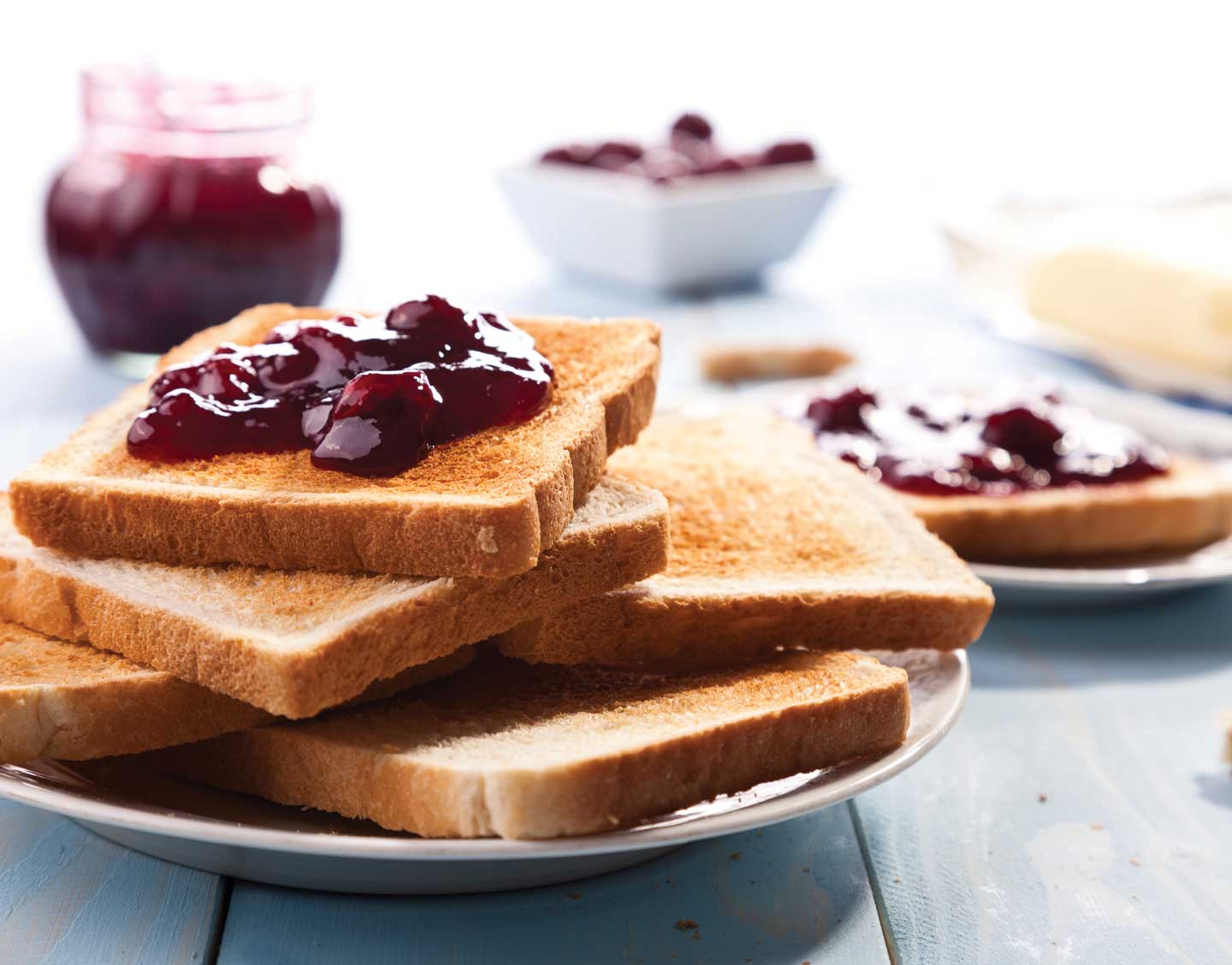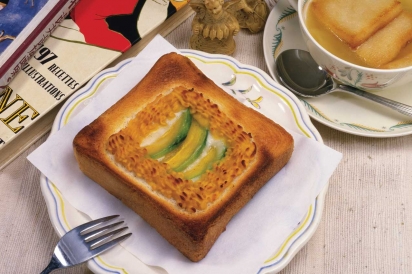Toast: A Meal for All Seasons
Long-stalled, but rapidly moving forward due to innovative baking techniques and passionate home bakers, the everyday world of grilled bread – toast - to be specific, is now “a thing.”
You read that sentence correctly – toast - a simple piece of bread grilled in the oven, charred in the skillet or warmed to a light golden crunch in a toaster, is now the talk of foodies of all ages from artisan eateries in Manhattan to the shores of Laguna Beach.
I have eaten a lot of toast throughout my years. In fact, toast is one of my favorite snacks. I’ve eaten so much toast that I have come to wonder about its origin, its history and especially why it has become a recent trend.
Toast begins with bread and bread begins with flour. The first archaeological proof of flour dates back 30,000 years ago. It is highly probable that people were making flatbreads around that time, as well.
Bread was an essential food in early civilizations and in ancient Greece it was sometimes used as an offering to the gods. Some of the first crops to be cultivated were wheat and barley and even though these crops were not as nutritious as other food sources, bread – the result of grains – fed a larger number of people. In fact, the ability to make bread was one aspect in ancient, tribal people’s ability to settle in one place ceasing their nomadic way of life.
The bread we eat today first originated in ancient Egypt. The Egyptians discovered that dough left sitting out for a time would rise and when baked, the dough changed texture and retained the risen shape.
The Egyptians also invented the closed oven which was used for the baking of leavened breads by 3000 B.C. The workers who built the great pyramids were paid partially with bread.
Leavened bread - at this point in history – was lighter and thought to be better than flat breads. The problem was when the leavened bread was left out in the sun for too long it became dry and difficult to chew.
This brings us to the origin of toast. It is thought that toast began as a method to preserve bread. Scorching or even browning sliced bread helped it last for longer periods of time and thus, it could be stored.
The word “toast” means “sliced bread singed by heat” and comes from the Latin torrere, “to burn”.
The practice of toasting bread first became popular in the Roman Empire. It is thought that breads were toasted by placing the slices in front of a fire on a hot stone, but in time basic devices were invented to quickly cook the bread in the fire. These devices were frames that allowed the bread to cook evenly.
As a writer, I was intrigued to discover toast was first noted in print within a recipe dating from 1430. The recipe was for Oyle Soppy, a dish of seasoned onions stewed in a gallon of stale beer and a pint of oil. That does not sound appealing to me since I like my toast with a square of butter melting in to it, so just how did toast make the transition from the 1400s to a story on the front page of the food section in the New York Times?
During medieval times, bread was so important that it often made up part of the table setting. Bread was the plate. History tells us bread used in this way was called a trencher. A trencher was a slab of stale bread with food served on top. The bread soaked up the flavors and nectars of the food and then the bread could be eaten, as well. Throughout the 1500s and most of the 1600s, toast was also eaten after it was used as a seasoning of sorts for spirits.
All of this changed with the invention of toasters and grills. Alan MacMasters, a Scotsman, invented the first electric toaster in 1893. MacMasters’ invention, however, did not take hold with the public. His appliance was thought to be a fire hazard as the iron wiring often melted. The other problem was fundamental. Electricity was simply not common in households in the late 18th century.
Two inventors from Chicago, in 1905, created an alloy that was fire resistant and this marked the trail for others to try their devices on toasting bread. Around this time many electric toasters were brought to market. These toasters, however, only toasted one side of bread at once, so the bread had to be flipped. An automatic toast-turner, was invented 1913 and this was followed by the semi-automatic toaster. This turned off the heat in the device when the bread was cooked. Finally, in 1919, the pop-up toaster, similar to the small appliance on your kitchen counter, was created and today toast rightfully takes its place as a staple in America’s haute cuising.
TOASTY TALES
White bread was once considered to be food of the upper class and royalty. Brown bread was for the poorer classes.
A popular idiom associated with the word “toast” is the expression “to toast someone’s health”, which is often done by one person in a group or at a gathering. The toast is done by raising a glass in salute to the individual. This meaning is derived from the early meaning of toast, which from the 1400s to the 1600s meant warmed bread that was placed in a drink. By the 1700s, there were references to the drink in which toast was dunked being used in a gesture that indicates respect: “Ay, Madam, it has been your Life’s whole Pride of late to be the Common Toast of every Publick Table
Have you heard of the “buttered toast phenomenon?” The phenomenon was first published in the form of a poem in the New York Magazine in 1835 and it hints to the fact that when toast slips out of your hand, it land butter-side down. This notion is based on buttered toast usually being held butter-side up. If dropped at an angle from a hand, given that the toast is likely to be between two and six feet off the ground, at the start of the fall, it only has time to do a half-turn, thus it seems to almost always (62% of the time) land butter-side down. The weight of the butter actually has little bearing on the outcome of the fall.
The world’s first automatic bread slicer was invented by Otto Frederick Rohwedder in Davenport, Iowa in 1912, but was not used in bakeries until 1927.
Electric toasters are in approximately 88% of American homes, today.






